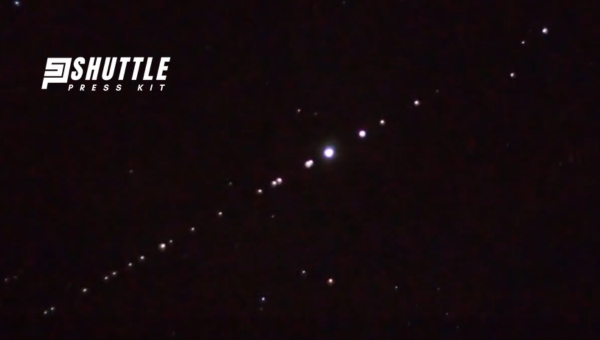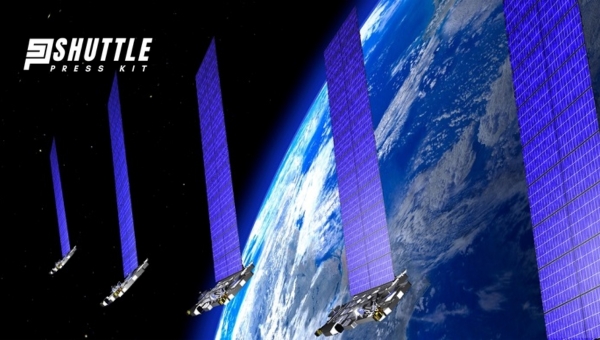Have you ever looked up at the night sky, wishing you could spot the amazing Starlink satellites as they orbit the Earth? Well, your wish can come true! With the right tracking tools and a bit of patience, seeing these marvels is not just possible; it’s easy.
Get ready to transform your ordinary stargazing into an extraordinary experience with this simple guide on how to use a Starlink tracker. To see Starlink satellites in the night sky, all you need is a clear evening and a good tracking app or website.
These tools tell you when the satellites will be visible from your location. Just find a spot away from city lights, check your tracker for the next pass of these futuristic orbs, and look up! Trust me, watching them glide across the stars is something you won’t forget.
Yes, it is indeed possible to see Starlink satellites with the naked eye, primarily during the hours of twilight when sunlight reflects off their surfaces. Positioned in low Earth orbit, these satellites can often be observed as a string of bright dots moving steadily across the sky.

Depending on your location and time of day, particularly just after sunset or before sunrise, they can become quite visible under clear skies. The movement and brightness pattern distinguish them from other celestial objects.
The visibility of Starlink satellites can vary based on factors such as weather conditions, light pollution in your area, and the specific positioning and trajectory of the satellite cluster at any given time.
Websites and mobile applications that track satellite positions can provide precise timing for when you might catch a glimpse. These observations offer not only an exciting spectacle but also a real-time example of how rapidly space technology is evolving to provide global internet coverage.
Also Read:Starlink vs. Hughesnet: Picking Your Best Satellite Connection
Where are Starlink Satellites Positioned in Space?
Starlink satellites, part of SpaceX’s project to provide global internet coverage, are positioned strategically within low Earth orbit (LEO). These satellites are placed at specific altitudes to optimize communication speed and reduce latency, forming a large network that covers the entire planet.

- Orbital Zone: Starlink satellites operate within the low Earth orbit area, which ranges from approximately 180 kilometers to 2,000 kilometers above the Earth’s surface.
- Operational Altitude: The majority of these satellites function at altitudes between 340 km and 1,200 km from the Earth.
- Network Formation: They travel on predetermined paths that ensure they form a grid around the Earth for maximum coverage and connectivity.
Guide to Observing Starlink Satellites in the Night Sky using Starlink Tracker
Spotting Starlink satellites as they traverse the night sky has become a popular activity for stargazers and space enthusiasts alike. These satellites, launched by SpaceX, are part of a constellation designed to provide global internet coverage. On clear nights, they can often be seen as a train of bright dots moving across the sky. Here’s how you can catch a glimpse of this celestial spectacle:

- Check Satellite Prediction Websites: Use websites like “findstarlink.com” or mobile apps dedicated to satellite tracking to find out when Starlink satellites will be visible in your specific location. These platforms provide schedules based on your geographical coordinates.
- Set Your Observation Time: Once you have found the times when the satellites will be visible from your area, plan to start observing several minutes before the predicted time. This preparation allows you to acclimate to the dark and ensures you don’t miss their appearance.
- Find a Dark Spot: Choose an observation spot away from city lights and other sources of light pollution. Darker environments significantly improve your chances of seeing the satellites clearly.
- Allow Your Eyes to Adjust: Give yourself at least 10 minutes in darkness for your eyes to adjust fully. This increases sensitivity and makes it easier to spot the dimmer satellites against the night sky.
By following these steps, you can enjoy watching Starlink’s satellite constellation march across the heavens – a sight that combines technology with stargazing, offering an awe-inspiring bridge between Earth and space endeavors.
Why Can We See Starlink Satellites? Do They Have Lights?
Starlink satellites are highly visible from Earth’s surface, particularly shortly after their launch and during their initial orbital placement. This visibility is not due to artificial lights mounted on the satellites but rather to the reflection of sunlight off their surfaces. These satellites are designed with large, flat panels that can catch and reflect sunlight back to Earth, making them appear as bright moving dots across the night sky.

The visibility of Starlink satellites is most pronounced during dawn or dusk. At these times, the satellites are positioned in a way that they are illuminated by sunlight while the ground below is in relative darkness. It’s this contrast that makes them stand out to observers on the ground. As these constellations orbit at around 550 kilometers above Earth, without onboard lights, it’s entirely their reflective surfaces catching sun rays that enable us to see them from down below.
Also Read: Starlink Offer Phone Service? Discover Now!
Can you see Starlink satellites in the night sky?
Yes, Starlink satellites can be seen in the night sky shortly after launch and during their initial orbital positioning, appearing as a string of bright dots moving across the sky.
How can you see satellites in the night sky?
Satellites are visible after sunset or before sunrise when they are illuminated by the Sun but it’s dark at the observer’s location, often appearing as moving lights across the sky.
How many Starlink satellites are in orbit now?
As of my last update, there were over 3,000 Starlink satellites in orbit, with plans for thousands more to enhance global internet coverage.
How fast do Starlink satellites travel?
Starlink satellites orbit at speeds of approximately 7,500 meters per second (about 27,000 kilometers or roughly 17,000 miles per hour).
Also Read: Starlink App Support Section’s Overhaul: A User-Friendly Refresh
Conclusion
Capturing a glimpse of the Starlink satellites as they gracefully traverse the night sky is an awe-inspiring experience for many astronomy enthusiasts and casual stargazers alike. The key to witnessing this celestial spectacle lies in timing, location, and a bit of preparation.
By utilizing tracking tools and websites, everyone can pinpoint the optimal moments to observe these satellite constellations. Remember, visibility conditions vary and depend on your geographical location, weather conditions, and light pollution levels in your area.